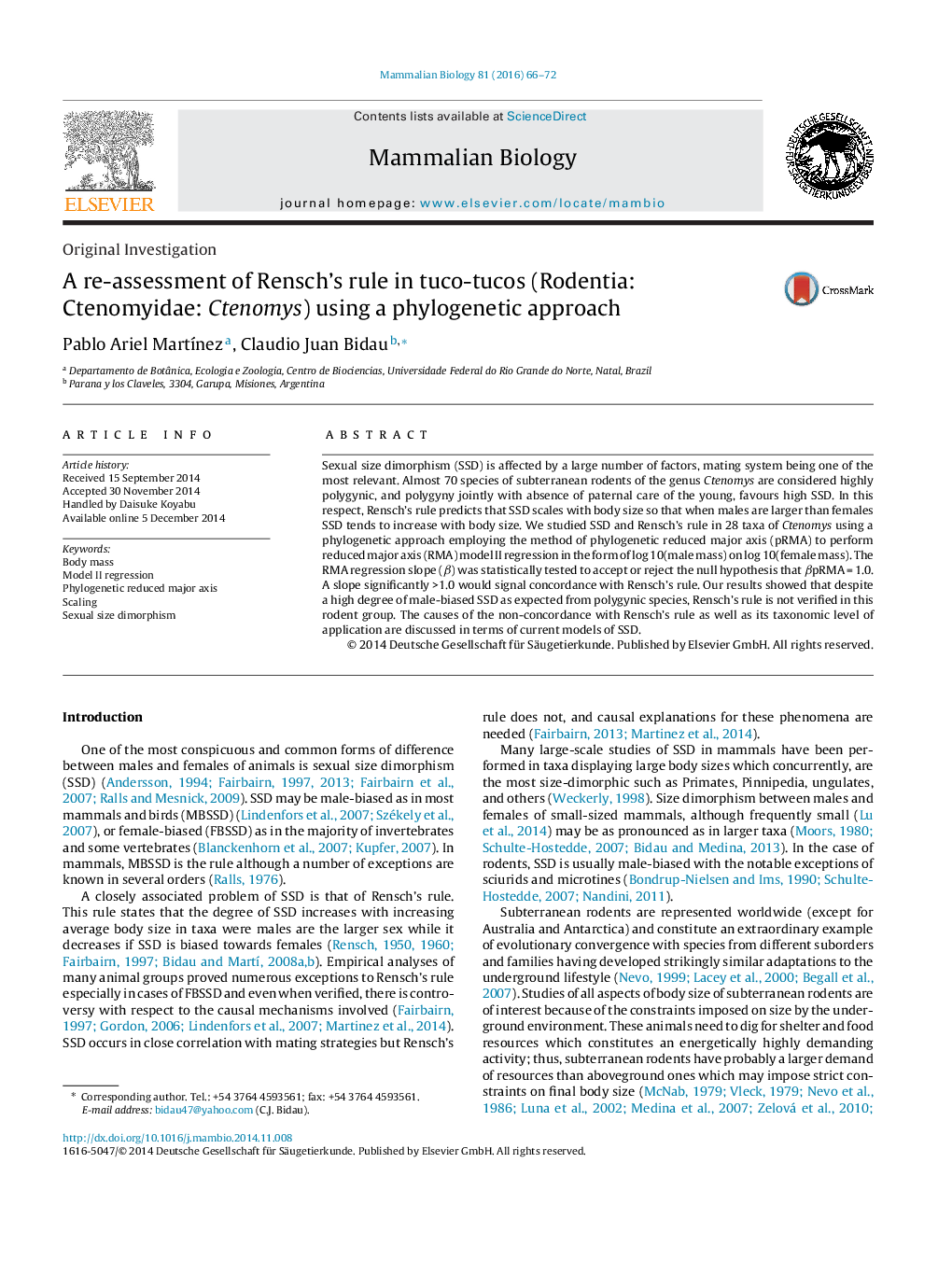| Article ID | Journal | Published Year | Pages | File Type |
|---|---|---|---|---|
| 2193357 | Mammalian Biology - Zeitschrift für Säugetierkunde | 2016 | 7 Pages |
Sexual size dimorphism (SSD) is affected by a large number of factors, mating system being one of the most relevant. Almost 70 species of subterranean rodents of the genus Ctenomys are considered highly polygynic, and polygyny jointly with absence of paternal care of the young, favours high SSD. In this respect, Rensch's rule predicts that SSD scales with body size so that when males are larger than females SSD tends to increase with body size. We studied SSD and Rensch's rule in 28 taxa of Ctenomys using a phylogenetic approach employing the method of phylogenetic reduced major axis (pRMA) to perform reduced major axis (RMA) model II regression in the form of log 10(male mass) on log 10(female mass). The RMA regression slope (β) was statistically tested to accept or reject the null hypothesis that βpRMA = 1.0. A slope significantly >1.0 would signal concordance with Rensch's rule. Our results showed that despite a high degree of male-biased SSD as expected from polygynic species, Rensch's rule is not verified in this rodent group. The causes of the non-concordance with Rensch's rule as well as its taxonomic level of application are discussed in terms of current models of SSD.
